What’s A Social Enterprise?
(1.1) A social enterprise is a business style that is orientated towards doing good for society. I have been in touch with a social enterprise based in Northampton, that recycle garden tools. The tools are refurbished by homeless people, that are trained and employed by the social enterprise. This helps people learn new skills and get back on their feet through meaningful work. Profits from a social enterprise are re-invested to back into the organisations to further support the social objects, over any personal gain or increased shareholder value.
Social enterprise is adopted by Ruskin Mill, students and staff can develop social enterprise that arise from the land, and this creates meaningful work that is interrelated with the community, economics, and society on a real world level.
Leadership & Management Of A Social Enterprise
(2.1) Management is necessary to orchestrate the vision of a social enterprise, and ensure consistency, and direction throughout the organization. It uses a hierarchical structure to impose order from the top down. Leadership is a skill that is harnessed to provide direction and navigate through challenges. Anyone can show leadership.
(2.2) I am very enthusiastic and this helps me to start new projects and motivate others, which is a very important skill while tutoring staff, and motivating other staff members to role model (especially while working with students.) I work really well as part of team, which is important as Ruskin Mill is a very social environment, but I also enjoy working alone and this is a space where I can become hyper-focused.
I feel that I need to work on patience, when it comes to projects. I often gets lots of ideas and feel that I need to act on all of them. But often, in hindsight I realize that I should have invested my time in nurturing existing projects. Recently, I have started using a checklist on my phone, listing everything I need to do, this makes sure that I don’t forget anything important, and neither neglect to continue working on existing projects. The checklist is very important to help me manage my time, and my priorities.
In the valley, we produce herbal teas, grow flowers, and vegetables for the cafe. These are our social enterprises. In the summer, we created a honesty box in the valley, which was making a considerable amount of money each weekend, as the general public were paying for the ethos of Ruskin Mill and not just the produce.
Preparing For A Regulatory Inspection
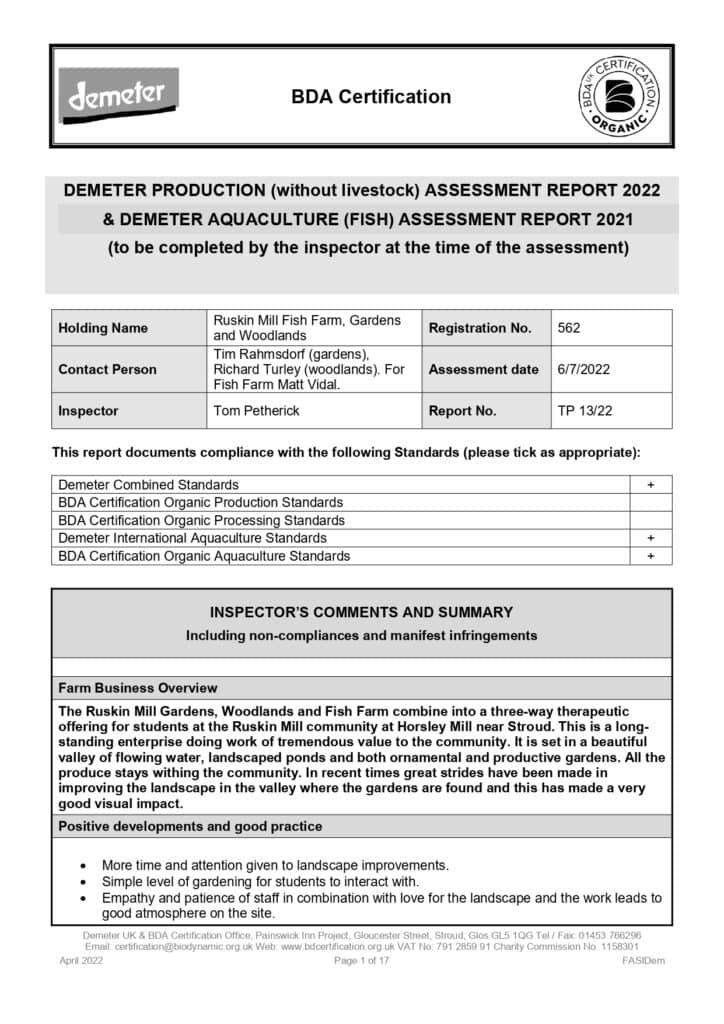
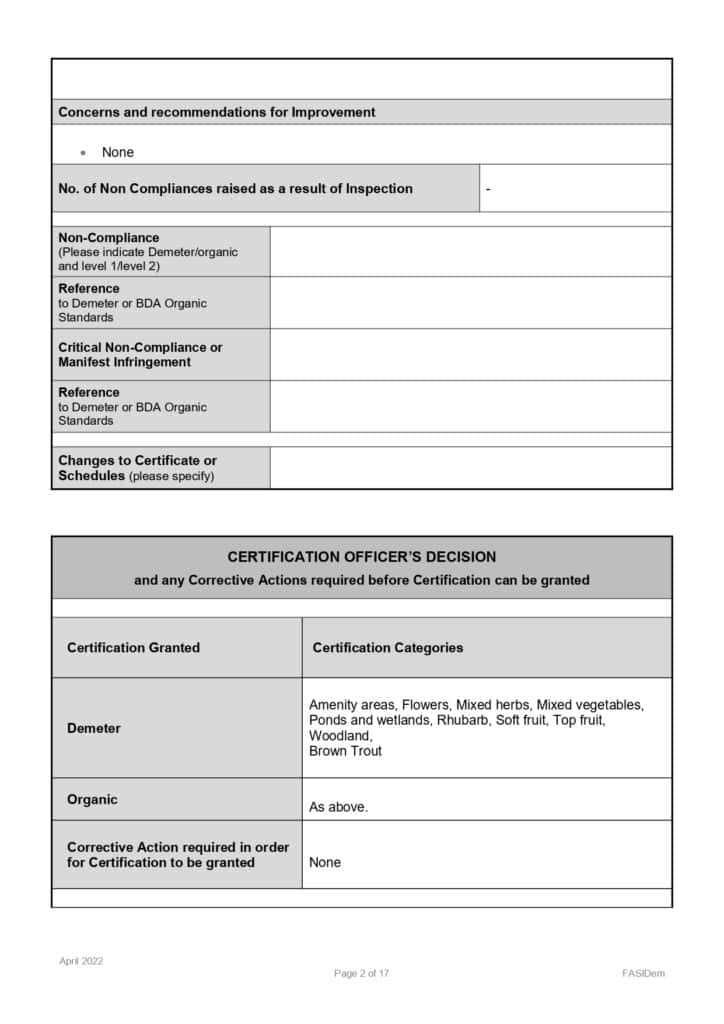
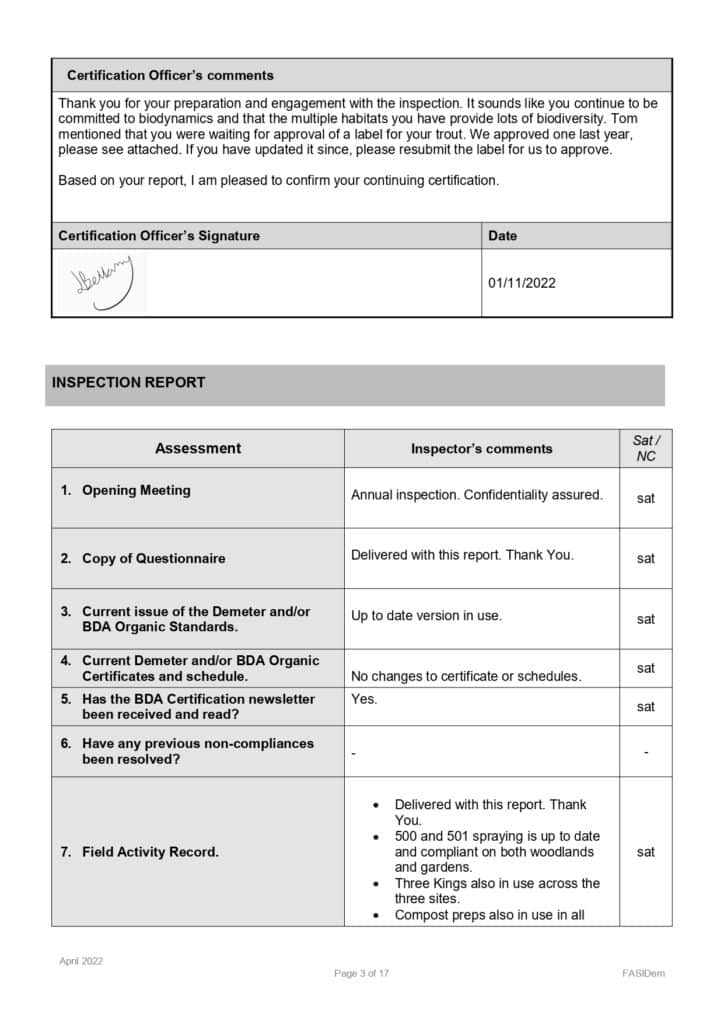
(3.1) An inspector from Demeter came to Ruskin Mill in July 2022 and met with my colleague Tim, as I was working with students at the time. The report indicates that the inspector was very content his visit to Ruskin Mill. They noted that we were up-to date with the biodynamic sprays and compost heaps.
“Biodiversity is well attended to and more than 70% may be considered a reserve across the three sites.” This meets the biodynamic standards of having at least 10% of the land left to support biodiversity.
(3.2,4.1) I have put together a cropping plan for the various beds and market gardens across the valley.

(3.3) My colleague Tim is on the biodynamics standards committee, and cannot think of any Demeter specific regulation changes that would have affected our holding recently, besides supply chain issue and Brexit.
Animal Husbandry Plan
In the valley we keep chickens. We currently have a Cockerel and 8 Hens. On average during the longer days of Spring and Summer, each hen lays one egg per day. The chickens are fenced in with an electric fence, that gives them about 12 meters squared of fresh grass. Every couple weeks we move the area, to allow the grass to regrow.
During the winter the chickens were confined to a smaller area, due to the Avian Influenza (Bird Flu). They are not allowed to mix with wild birds during this time. We put the chickens into a small polytunnel, with an outdoor run with a netting to stop wild birds from entering their area.
(4.1) The chickens have their wings cut so they cannot fly over the fence. An electric fence is turned on every even, to stop foxes and other predators. They are also closed into their houses once its dark. We provide them with water, and food. Their food container can be filled up, to provide a flow of food for a couple of days. Each week their houses are cleaned. The soiled wood shavings are added to the long-term composts, as their manure is full of nitrogen, but it needs time to break down before usage as it is very acidic. Fresh wood shavings are then collected from the green woodwork shed or shredded paper is collected from the offices. Its important to frequently clean their houses.
Eggs are collected during the week by students, dated with a pencil, and then delivered to the café once we have a amount worthy of a delivery.
The chickens also require an stimulating environment, to keep them active. Spreading their food out across their run lets them spend the afternoon searching for pellets among the grass. Recently, we noticed that the chickens were going under their houses during the day to shelter from the sunshine. With students we built a ‘chicken shack’ which the chickens really enjoy. They are able to sit together in the shade, or even jump onto the roof of the shack. Having a range of environments is important for their health. The quality of the eggs is noticeable, the yolk is very vibrant.
The quality of the eggs is related to their environment. The large run provides lots of insects, fresh grass, and spaces to keeps them happy.
(4.2) In the valley we keep a spreadsheet that accounts all of the eggs, tea, and flowers that we send to the café and canteen. In my role I haven’t been given a budget. Sometimes, I order seeds and gardening equipment. Recently, I have been buying beekeeping equipment, as we caught five bee swarms this year. I am interested in working with students to harvest a small amount of honey to be sold at the farm shop in September.
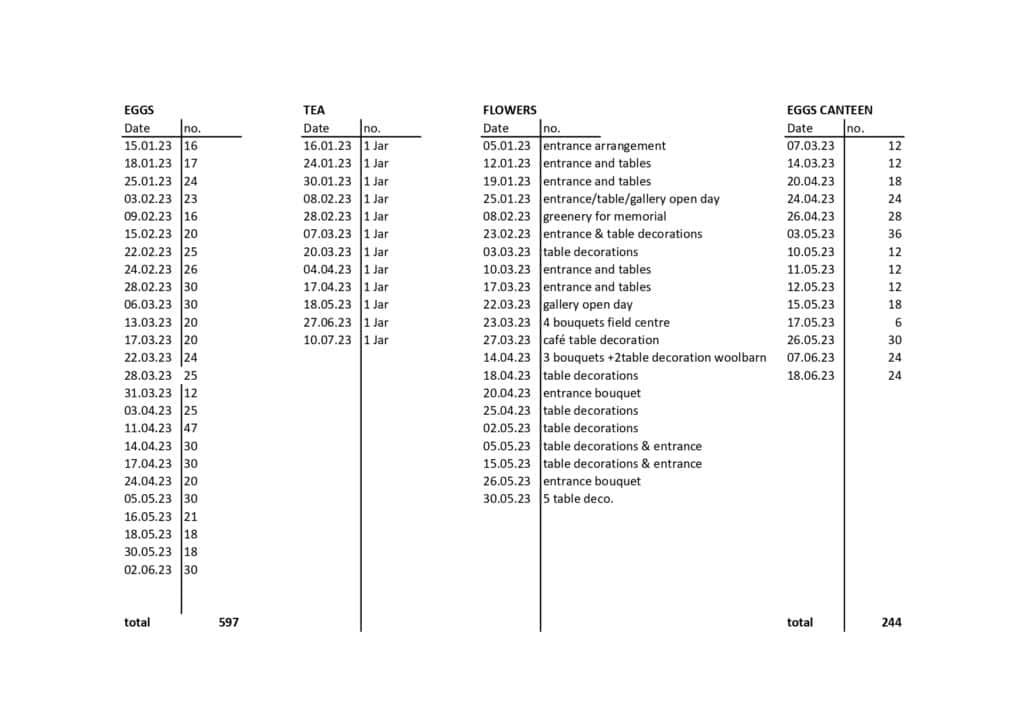
Beekeeping Cost Analysis
I have created a cash flow for the beekeeping at Ruskin Mill. We started the year with 2 hives that survived winter, but caught 5 swarms in Spring of this year.
We have lots of equipment at Ruskin Mill from previous years, such as smokers, suits, frames, and boxes. In the 5 year forecast, I have incrementally added new hives, as 7 hives is already a lot to manage, but I think we could fit 10 hives across the site, with 5 in the valley, an 5 in the bee garden near the farm.
If we wanted more hives, it think new would need to establish a third apiary site, as I don’t like the ideas of some many hives been close together.
Once, the hives are established the yearly costs with decrease, while labour stays constant. The bees are managed during Wednesday afternoon beekeeping sessions, which accounts for 2.5 hours a week, from April to October.

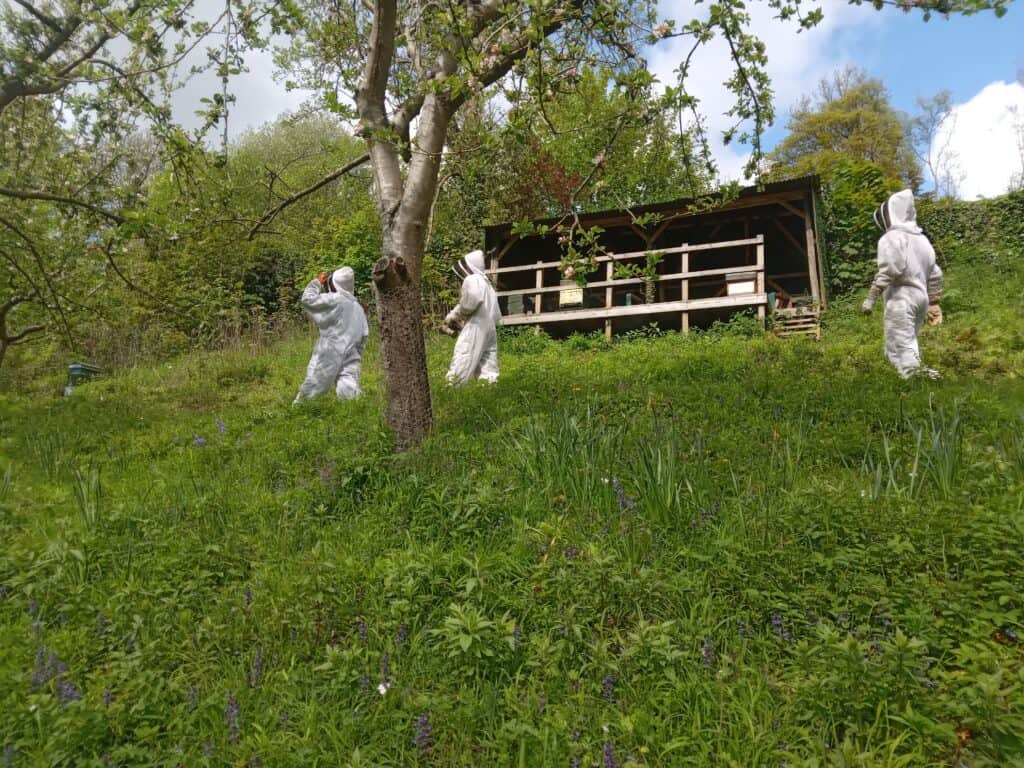
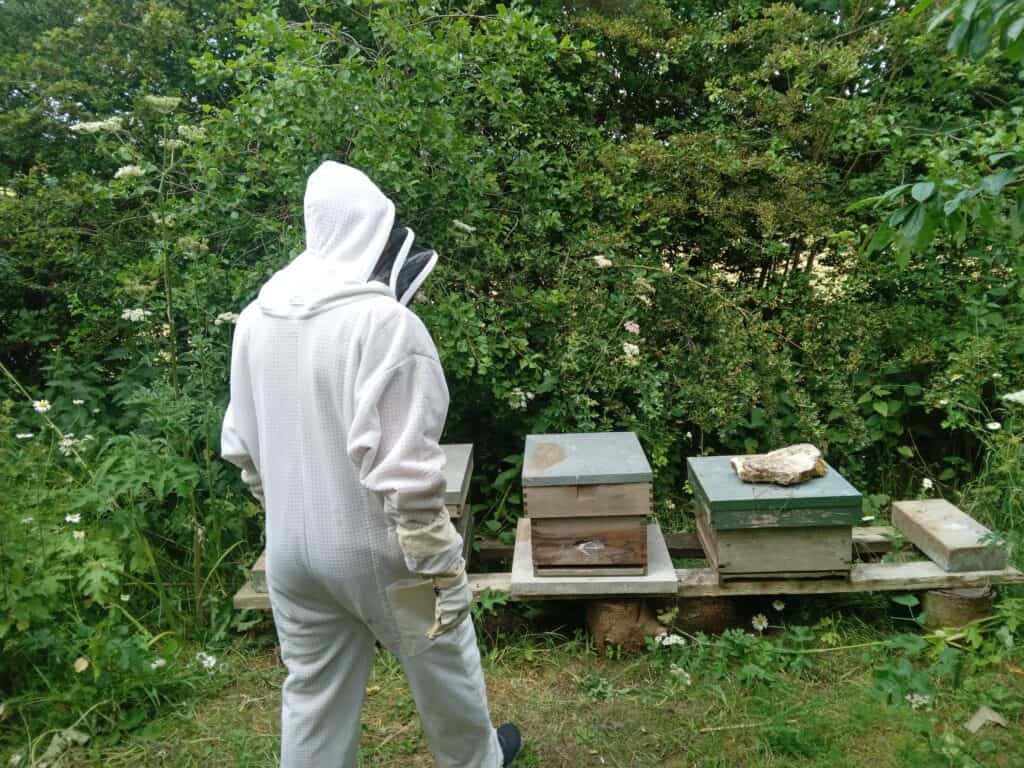
The hives are managed biodynamically. Once they are established, the bees should be able to draw out their own comb, using the first inch of comb left on the frame prior extracting honey. This reduced the change of pesticides entering the hive on recycled wax foundation, which is a global trade, and it fits in with the idea of a farm organism.
We don’t want to take too much honey, especially from hives that are new. In year 1 anticipate selling 20 jars of honey in the farm shop, but project we would be able to sell 70 jars sustainably in year.
It is important to note that beekeeping is part of the Ruskin Mill curriculum, and has many therapeutic benefits for the students. This hasn’t been quantified in the table below. This exercise allows us to run the social enterprise more cost effectively, and brings more awareness on how we are spending money.
| Beekeeping Cash Flow | Year 1 | Year 2 | Year 3 | Year 4 | Year 5 |
|---|---|---|---|---|---|
| Number of Hives (accounting for loses/swarms) | 7 | 8 | 8 | 10 | 10 |
| Number of new hives | 5 | 1 | 0 | 2 | 0 |
| Expenses (£) | |||||
| Foundation | 70 | 14 | 28 | 28 | 0 |
| Supers | 108 | 40 | 0 | 80 | 0 |
| Fondant | 0 | 50 | 0 | 0 | 0 |
| Labour (£12ph, 24 weeks, 2.5h per week) | 720 | 720 | 720 | 720 | 720 |
| Total Expenditure | 898 | 828 | 748 | 828 | 720 |
| Revenue | |||||
| Jars of Honey (227g) £6 | 120 | 300 | 330 | 420 | 420 |
| Honey Comb (8oz) £12 | 240 | 420 | 480 | 660 | 660 |
| Total Revenue | 360 | 720 | 810 | 1080 | 1080 |
| Net | (538) | (108) | 62 | 252 | 360 |
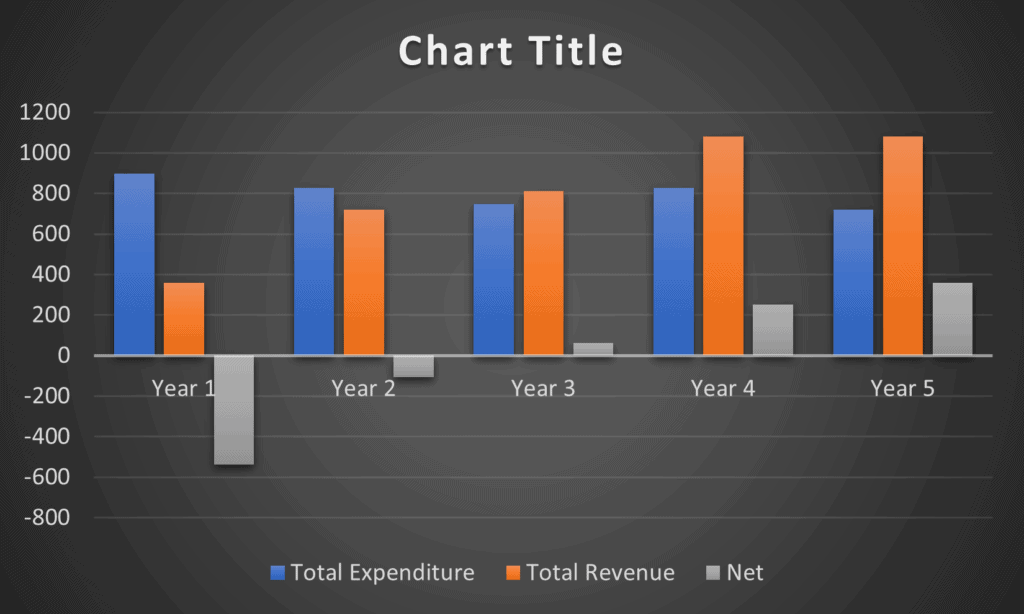
(4.3) The chicken eggs are taken to the café, and used to make quiches, spanakopita, frittatas, cakes and other dishes which are sold to the public and students lunches. The eggs from the Valley, help supplement the café. But we don’t produce enough, so they café has to still purchase eggs from other sources. We are considering doubling the amount of chickens in the valley, as going form 8 chicken to 16 chickens doesn’t increase the labour by a significant amount. Yet, it means we can double our egg production, as we have the space and resources to have 16 chickens.
If we do get more chickens, then we would get the Cotswold Legbar, that produces blue/cream eggs. These could then be distributed at the farm shop.
Managing Animal Husbandry
(5.1) Chickens require day-to-day care. First thin in the morning is to turn off the electric fence, then open the chicken houses. They leave the houses in their pecking order, and one hen usually stays in the nest box. They run around quickly, examining their area, before settling down, and searching for food.
They require a supply of water. Every couple of days their water is replenished, as it is stagnate water. A poultry water dispenser, allows you to fill enough water to last a couple of days. This is practically helpful during the weekends, as you can fill it up to the top on a Friday, and they will have plenty to last them until Monday. You can also do this with their feed.
Recent Posts
Ideal Dates for Applying the Biodynamic Preparations in the Year
9th May (afternoon) - Stirring and Spraying 500 12th May (morning) - Stirring and Spraying 501 21st May (morning) - Stirring and Spraying 5015th or 6th June (afternoon) -...
What Does the Soundscape of Green Woodwork Afford for Self-regulation?
This essay is written as part of an MA in PSTE at Ruskin Mill Centre For Practice & Huddersfield University“There is music in the work and shavings dance from a well-honed...
